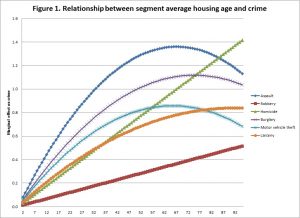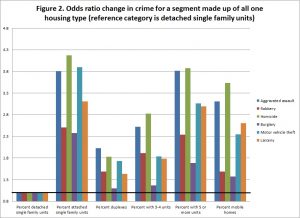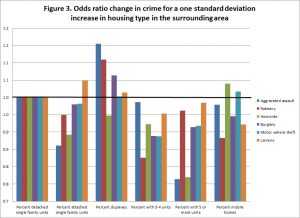This study introduces filtering theory from housing economics to criminology and measures the age of housing as a proxy for deterioration and physical disorder. Using data for Los Angeles County in 2009 to 2011, negative binomial regression models are estimated and find that street segments with older housing have higher levels of all six crime types tested. Street segments with more housing age diversity have higher levels of all crime types, whereas housing age diversity in the surrounding ½-mile area is associated with lower levels of crime. Street segments with detached single-family units generally had less crime compared with other types of housing. Street segments with large apartment complexes (five or more units) generally have more crime than those with small apartment complexes and duplexes.
You can access the freely available article by Dr. John R. Hipp, Dr. Young-an Kim, & Dr. Kevin Kane online first in Crime & Delinquency entitled, “The effect of the physical environment on crime rates: Capturing housing age and housing type at varying spatial scales”.
Get it here:
http://www.sciencedirect.com/science/article/pii/S0049089X16307931
Abstract:
This study introduces filtering theory from housing economics to criminology and measures the age of housing as a proxy for deterioration and physical disorder. Using data for Los Angeles County in 2009 to 2011, negative binomial regression models are estimated and find that street segments with older housing have higher levels of all six crime types tested. Street segments with more housing age diversity have higher levels of all crime types, whereas housing age diversity in the surrounding ½-mile area is associated with lower levels of crime. Street segments with detached single-family units generally had less crime compared with other types of housing. Street segments with large apartment complexes (five or more units) generally have more crime than those with small apartment complexes and duplexes.


